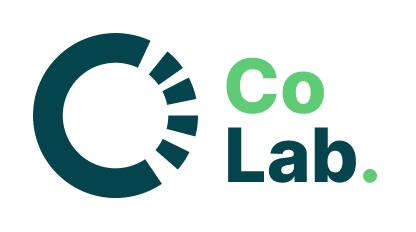People-Powered Planning: How CoLab Connects Teachers for Better Results
If you’re a teacher or have talked to a teacher this school year, you won’t be surprised by how teachers prep for classes these days. Teachers are working tirelessly to create engaging lessons, differentiate instruction, and meet the diverse needs of their students- yes, even with AI tools! Planning is still isolating and time consuming, reinventing the wheel day after day is still the norm, and, while innovative teaching and learning is surely happening, teachers are generally struggling to balance their responsibilities and feel supported.
This workflow tells a familiar story:
Barbara is a middle school health teacher that needs to create a nutrition unit, so she:
Starts by inputting a general idea into Magic School
Uses tools like Claude or other AI to iterate initial content
Copies materials to Google Slides to edit the content and add engaging elements
Searches Google for additional resources, images, and ideas
Goes back to Google Slides to make further updates
This disjointed process isn't just inefficient- it's professionally isolating.
Teachers spend hours searching for resources across platforms, often ending up with materials that require substantial modification to fit their classroom context.
Why Teachers Work This Way
You might wonder: If this approach is so inefficient, why do teachers continue to plan this way? The answer lies in several systemic challenges:
Limited Common Planning Time
Many schools provide minimal (if any) dedicated time for collaboration. This is often not because of lack of effort. With packed schedules, teacher shortages, and numerous administrative responsibilities, finding time to connect with colleagues becomes nearly impossible.
Building-Level Limitations
Even when teachers want to collaborate, they may not have grade-level or subject-area partners within their building. This is especially true in smaller schools, where a teacher might be the only one teaching a particular subject or grade. Most commonly language, art, physcial health and education, music and other specialists are left on their own.
Absence of Collaborative Infrastructure
Most school technology systems focus on student management or content delivery—not teacher collaboration. Until now purpose-built tools to facilitate resource sharing and networking across schools didn’t exist. Teachers were left to resort to personal networks or social media.
Professional Isolation
Teaching has traditionally been a "closed-door" profession, with limited opportunities to observe peers and share practices. This cultural norm unfortunately perpetuates isolation despite educators' desire for meaningful collaboration.
The Hidden Costs of Isolated Planning
This fragmented approach creates several critical problems:
Duplicated Effort: Thousands of teachers create nearly identical resources independently
Inconsistent Quality: Without peer feedback, resource quality varies dramatically
Professional Stagnation: Limited exposure to new ideas slows professional growth
Teacher Burnout: The constant cycle of creating materials from scratch contributes to the alarming teacher attrition rates we’re seeing across Canada and the United States right now.
On a personal note, I always think about this paradox 👉 while I've formed deep friendships with my teaching colleagues, I've rarely seen them actually teach. I might observe them with students during field trips, in hallways, at recess, or coaching extracurriculars - but almost never during classroom instruction. Of course classroom observations are difficult for all the aforementioned reasons, but we must question this status quo:
Does it serve education to keep teachers isolated?
What talent goes unrecognized?
What innovations remain undiscovered?
What growth opportunities are missed when we maintain these invisible walls between classrooms?
A workflow with CoLab presents a transformative alternative that hasn’t been possible until now.
Back to Barbara. She can create a stellar nutrition unit while using a combination of tech and people power, by:
Starting with AI tools for initial content generation
Sharing directly to the CoLab platform, where:
Other educators can provide feedback
Teachers can ask specific questions about differentiation
Colleagues can share expertise on modifications for diverse learners
Resources evolve through collaborative improvement
Reflecting and iterating based professional feedback and insights
This approach fundamentally changes how Barbara and other teachers work by creating a professional network specifically designed for educator collaboration.
Community Support at Every Step
CoLab transforms isolated planning into collaborative innovation through:
Cross-School Connections
Teachers connect with colleagues beyond their building walls, finding perfect collaboration partners based on teaching style, interests, and expertise—not just geographical proximity or traditional mentorship models based on years of experience.
Living Resources
Unlike static file sharing, CoLab resources evolve through collective expertise. When one teacher modifies a unit for ELL students, that knowledge benefits everyone using the resource.
Contextualized Feedback
Rather than generic online searches, teachers receive specific, classroom-tested advice from peers who understand their unique teaching context.
Professional Recognition
CoLab's platform acknowledges teachers' contributions, building professional reputation and creating pathways for teacher leadership beyond traditional administrative roles.
Beyond Efficiency
While CoLab certainly saves teachers time, its greatest value lies in transforming professional culture. By connecting educators across schools and districts, CoLab creates a professional community where:
New teachers find mentorship and support during critical early career years
Experienced educators discover new inspiration and opportunities to share expertise
Rural and remote teachers access the same collaborative networks as their urban counterparts
Innovations spread rapidly through professional networks rather than slow institutional channels
Join the Collaboration Revolution
While the traditional planning process leaves teachers disconnected and overwhelmed, CoLab offers a professional community where collaboration becomes a natural part of daily workflow.
When teachers have access to the collective wisdom of thousands of colleagues,
When no educator has to face challenges alone, and
Where every brilliant idea has the opportunity to benefit countless classrooms,
That’s when we know our future is bright
That's the world CoLab is building 🌍
Contact us today to book a discovery call!
Learn more about bringing CoLab to your school or district at www.colab.education.




